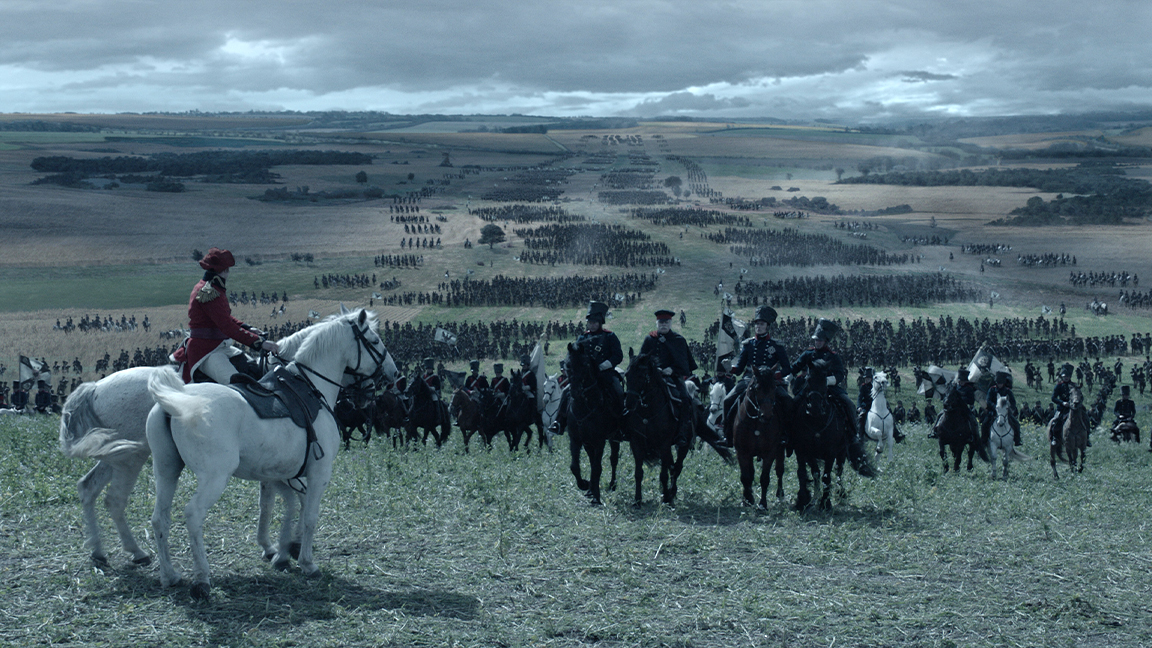
Ridley Scott's Napoleon is an epic, beautiful film filled with historical detail. It's also a movie that caught the eye of 'VFX haters', those who feel too much CG is ruining movies (it's not) and that debate around the denial of using CG in visual effects continues to be a digital art trend in 2024, which is a shame.
There's artistry involved in every frame of Ridley Scott's Napoleon and some of the most intense use of CG will go unnoticed by many. To find out what is real and what is masterful use of VFX I spoke with MPC's Charley Henley, the visual effects supervisor for Napoleon, who has a long-running relationship with Ridley Scott that dates back to work on Alien prequel Prometheus.
We begin, well, at the beginning, discussing Scott's industry-renowned storyboards. Before anything is filmed Scott draws immaculate panels. "He's trained in art school, he draws his storyboards beautifully," reflects Henley, "and he draws these storyboards, and you just look at them and go, 'I really want to help make that. It looks amazing'."
Henley tells me how these small illustrated panels feature "amazing composition" and how "there's something original in it. It's full of little details and so it's very exciting and inspiring […] and from a VFX point of view, he's got such an amazing eye and such an artist's view of everything visual, and basically he's just, I think, an incredible artist".
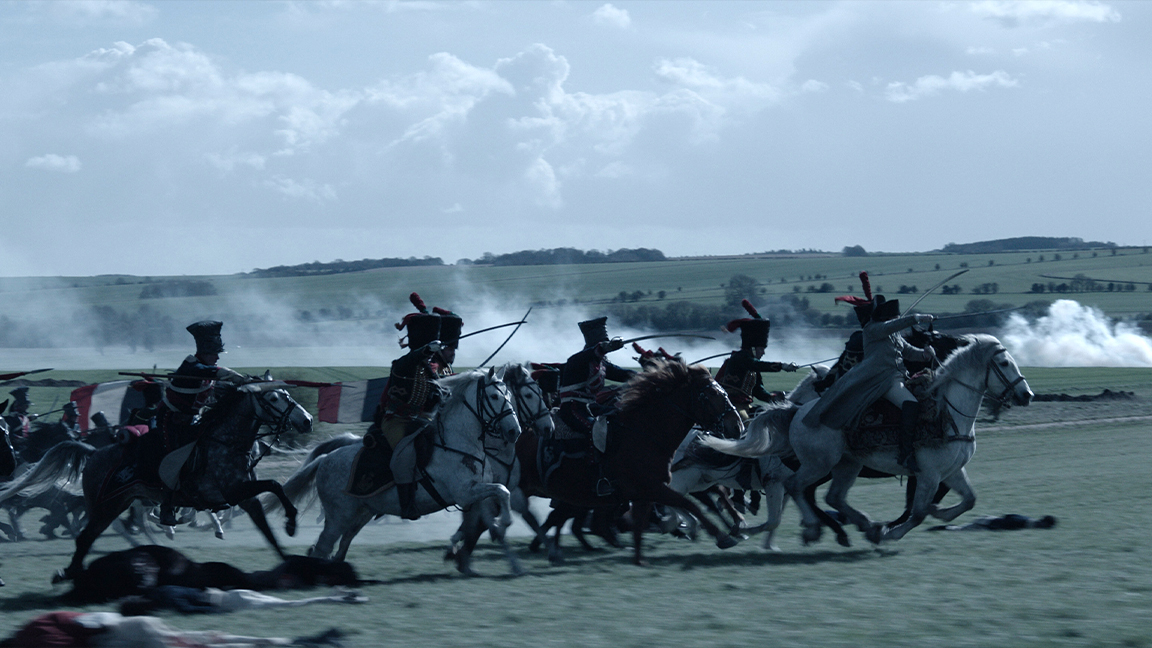
From a VFX point of view Ridley Scott's eye for a shot and talent for photography ensures every scene is beautiful even before the VFX team get to work. VFX artists begin the project knowing Scott's vision is going to be on a grand scale, his eye for the "big picture" and "what's really important" means "he sees the light and shape and form so well… I think that is what creates the great images which work," says Henley.
Together with Napoleon's cinematographer and Scott collaborator Dariusz Wolski, the VFX team know the footage they get is going to be good from the beginning, there's no uphill struggle to make something bad look good using CG.
"[Wolski] queued into what Ridley likes and the team really understands the aesthetic and tunes into his aesthetic from costumes right through to set design and the cinematography," says Henley. "And you really just try and carry through that. Everyone tries to see through Scott's eyes and carry that through to the end. And so there's a quality level all the way through because he's diligent about every department and everybody brings their best that they can."
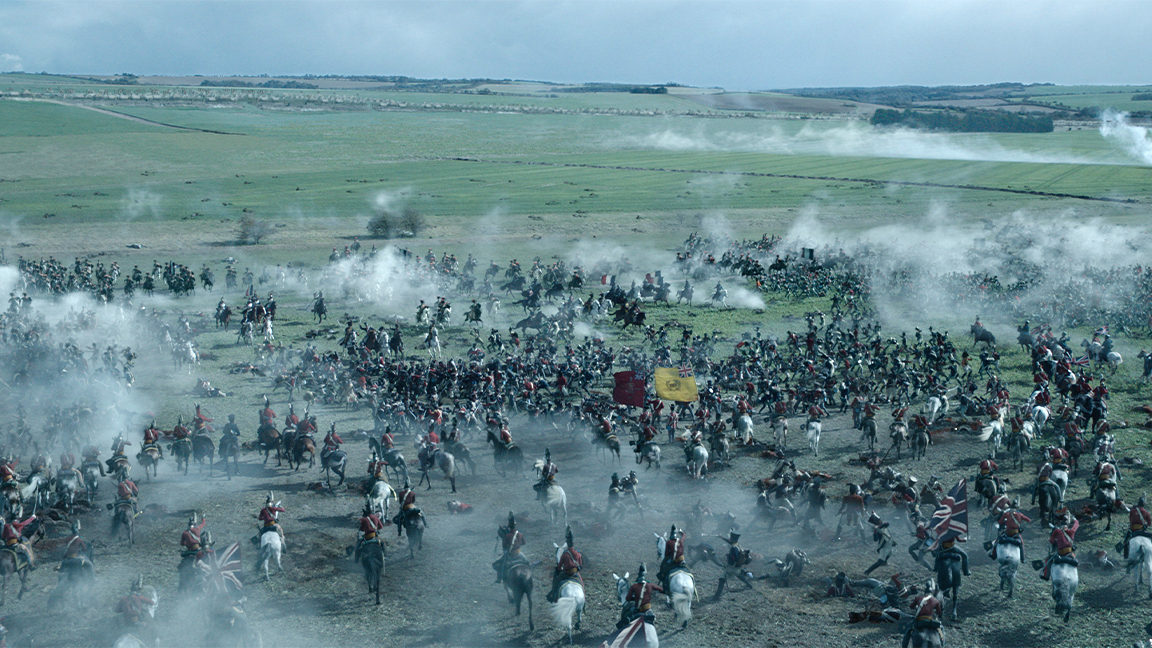
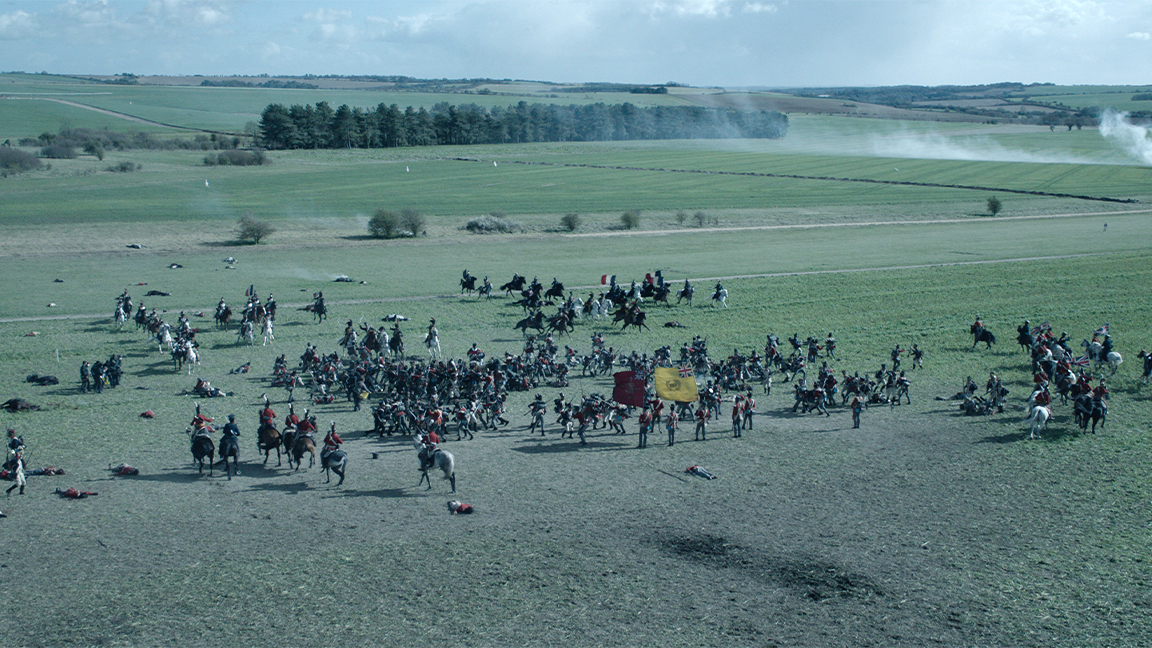
The debate, which can often lead to denial of when and how to use CG and VFX in a movie, is mute when it comes to Napoleon, because as Henley says, the footage is so beautiful to begin with. There was also a desire to use as little CG as possible on Napoleon, which led to many mis-interpreting this as 'no CG' was used.
Henley explains, "We started from the outset wanting to do as much real work as we could, lots of real special effects on a grand scale". The battles were impeccably planned with cameraman and editor Neil Corbett's team, and they'd sit around a "war room" table and debate how each scene was going to work.
For Waterloo, Henley pushed to ring fence a number of extras, as high as possible, so they could "keep that epic scale and not have fully CG battle scenes all the time. We found a number, a sweet spot of around 700 stuntmen and soldiers plus cavalry. It varied on the big battles between 500 and 700 people, which was pretty large actually. And when you frame on them, we did it by analysing the frame size and when you frame on them, that actually fills quite a little frame where you start really seeing faces."
When you go beyond that scale, says Henley, that's when the team begin to use digital extras, taking those 500 extras to 50,000 while maintaining the sense of realism and drama. But the "idea was always, let's get as much real in front of the camera for every shot possible".
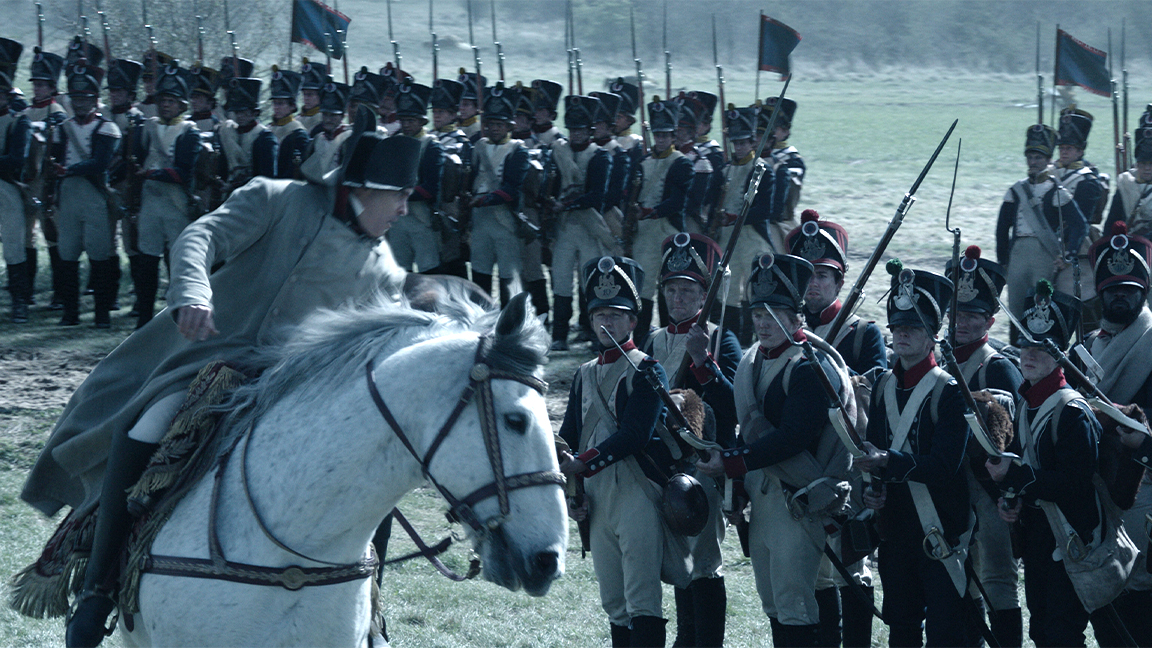
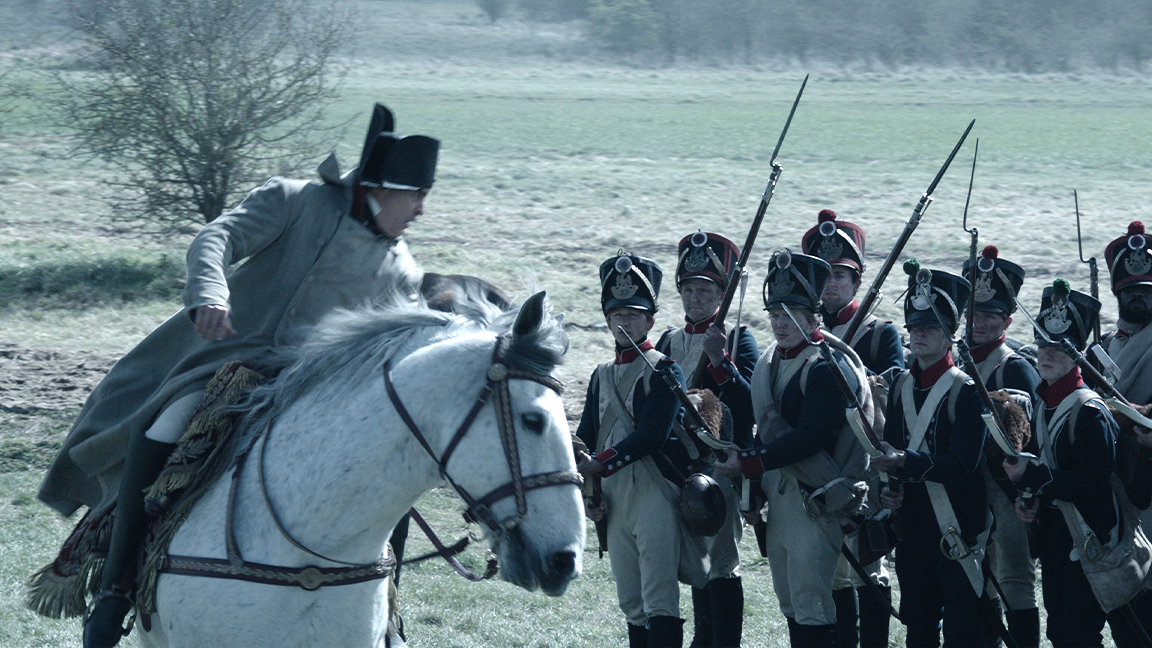
The desire to film as much as possible using stuntmen and extras led to some bizarre situations, shares Henley when he tells me "Waterloo was, for one reason or another, on the day, the scariest scene to be on the set of, trying to shoot because of the scale of it".
This was because Scott's desire to shoot as much in camera as possible led to the creation of two huge sets a mile apart, with the two armies, and cameras everywhere. "We had a few days for it," says Henley, "but it really felt like the whole company was going into a battle, and Ridley was just charging ahead, covering this thing as fast as possible".
The team had 14 cameras on set with everyone lending a hand, from producer Sarah Tulloch to on set VFX supervisor Richard Bain, "and I had to just be in Ridley's ear for planning the next thing. And we covered it. But we were really trying to do multiple things at the same time".
Henley explains: "When we'd shoot, we had one team off [somewhere], we had our own VFX camera operator, Hamish Doyne-Ditmas, and he was between the main unit, but then we needed him to shoot elements at the same time. When we were running out of time, we had this big space. So we'd be shooting elements of explosions on one part of the set, 14 cameras shooting some battle on the other part of the set, and the battle's kind of evolving as we are going. This one we didn't previs, some of the other ones we did, but this one we hadn't really had it planned, we just sort of went for it and it had the kind of organised chaos of a real battle. So they were really heavy days."
Henley laughs as he recalls the fun of racing on quad bikes from one side of the set to the other, taking 20 minutes. The effects team and Ridley Scott creatively managed their army of extras, loading one army with the entire crew while the opposing force was marked with life-size cardboard cutouts, around 40 of them spread across the battlefield, then cameras and extras would swap sides and uniforms and the process would continue.
We had to put shadows across the landscape, clouds in lots of sky replacements, adding in rain when we wanted the rain
Charley Henley, VFX supervisor, MPC
He jokes, "we only had so many tents, so we'd have to lift all the tents up, move the tents over, reset the other side. And then we looked back again at our standing people with one lone cameraman doing the long shots back at us. So it was a memorable day. And the weather on top of it was fucking atrocious English weather, which was kind of exactly what Ridley wanted. He drew these storyboards way back where the whole scene starts in the rain. The historical part is that it was wet. That's one reason that it took so long to get the battle started. It had been pouring with rain. The rain was helping out the British for a change there."
The conditions were used as reference too. The VFX team's cameraman was rushed out every so often to film the "amazing skies" and rain, which would change instantly, for reference later when the team added the CG rain and effects.
"There were a lot of special effects," says Henley, "but rain too, which would blow sideways". Henley tells me how the skies would darken and then clear, meaning much of the VFX team's work on these battles came down to improving continuity of the battle. "We had to put shadows across the landscape, clouds in lots of sky replacements, adding in rain when we wanted the rain, that kind of thing. And when it wasn't blowing the flags we had to make them blow. Ridley loved his flags, so we have to put more and more flags in."
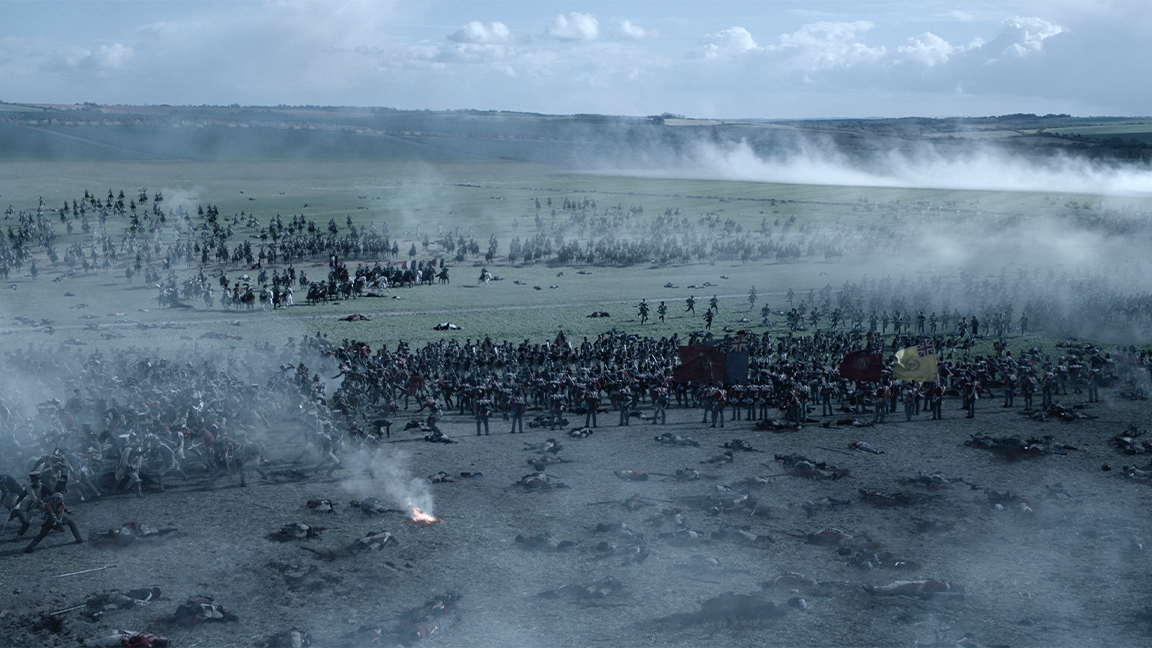

Napoleon's battles are filled with the expected CG components, Henley never tries to distance this movie from its VFX content, and you can't create real gore or blood or have horses fall for real, "so we had all these animated, hand animated, digital horses,” he says.
There's a meeting point between what can be done for real and what CG can bring to a movie, and this apex is where the tussle happens. The decision on Napoleon was to do as much in camera as possible with VFX used to embellish the world and recreate the battles on a workable budget.
Even the battle's gore is a blend of prosthetics and CG, Henley laughs, "We had limbs and things flying around, but there's also quite a lot of more subtle gore, which is how most of it is played. You only very briefly see people lose their heads, but it's very brief, you might miss it, but there's about three people who lose their heads in the film."
We are doing CG where we need it, but we're doing everything to keep it real, as well as what's practical and possible at the time
Charley Henley, VFX supervisor, MPC
Henley reflects on the no-CG debate and considers it a "bounce back" reaction to many films that use the technology to 'see how crazy can they can go'. These films are about the show but Napoleon asked a different question, can they "tame it back"? He says this can be "the way you use a camera or keep it within the physical limits", he reflects, "but isn't it nice to do old school stuff?"
He continues, "We are doing CG where we need it, but we're doing everything to keep it real, as well as what's practical and possible at the time. We shot elements for ships, I mean model elements where we could, practical effects where we could, and it's beautiful to get that right and composite stuff and sometimes CG without the right attention looks like CG. And then it makes me go, I don't like it because kind of got used to it and you have a reaction. But when it's done properly, it's incredible what you can do with it and it's an important tool."

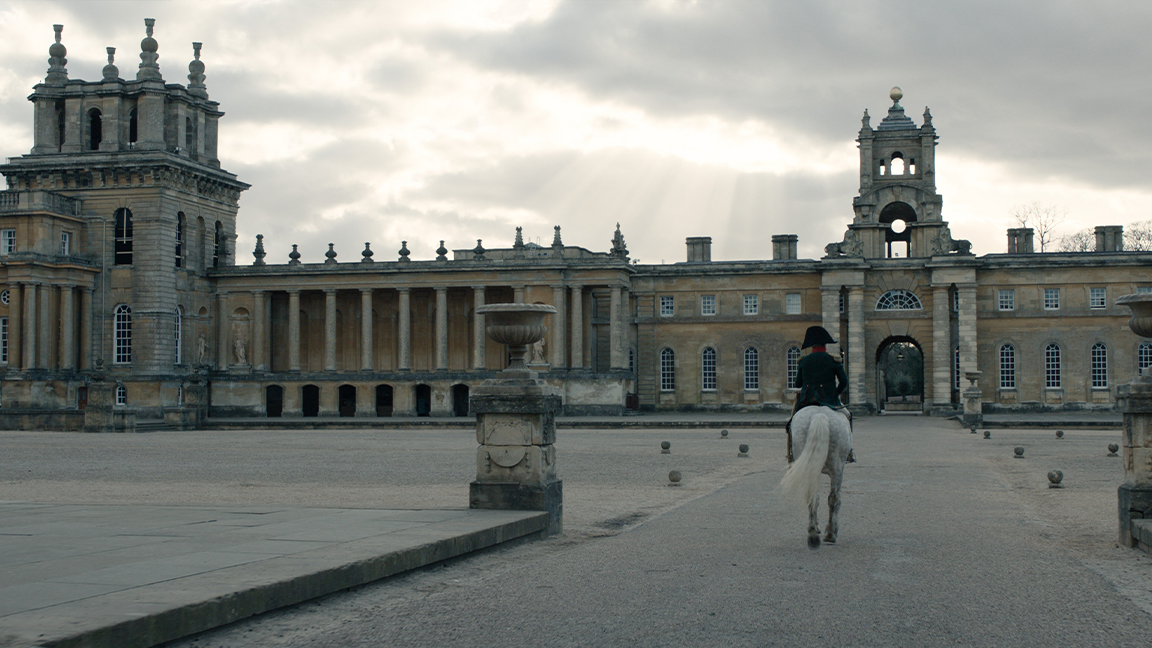
Amidst the big CG scenes, from the battle of Austerlitz where the team composited together various locations from an abandoned English airport to an Italian lake and a Pinewood water tank, to the Trafalgar campaign that features a mix of miniatures and CG models, Henley's overriding memory is of using CG ad hoc to keep up with Ridley Scott's impulses.
One scene was at the battle of the Pyramids. The crew were about to finish early when Scott wanted to get one more scene, "and it was chaos," laughs Henley. "It was almost the end of the shoot, so everyone's legging it over to this other location, trying to set it up, trying to get ready for the scene and the guys on the horse and, well, Ridley's like, "where are the shields? There should be shields. We don't have any shields today. The guy on the horse, at least he really needs a shield, what are we going to do?" And then everyone was like, 'let's make a shield out of this, that and the other'. In the end we found a bin lid, and it was a tire strap on the back of a bin lid. And then we painted it silver and we put some dots on it that looked like jewels and he ended up with a shield, and then we enhanced the shield in post."
The lighting department had to rig thousands of candles with these LED lights
Charley Henley, VFX supervisor, MPC
Likewise, one of the most challenging VFX scenes of all were the shots many will never believe are made using CG, which for Henley is that "sweet spot" where practical in camera effects, shoots and CG are combined to create a believable world without anyone knowing.
The film was shot on location at various stately homes, so candles and open fires weren't allowed. There are no real candles lighting these scenes, but instead the team recreated the lighting using CG, by first adding in LED lights toned to replicate the lighting of one, two and three wick candles and then matching these in post-production. "The lighting department had to rig thousands of candles with these LED lights, but they were like little square bulbs and then we replaced all of 'em," reveals Henley.
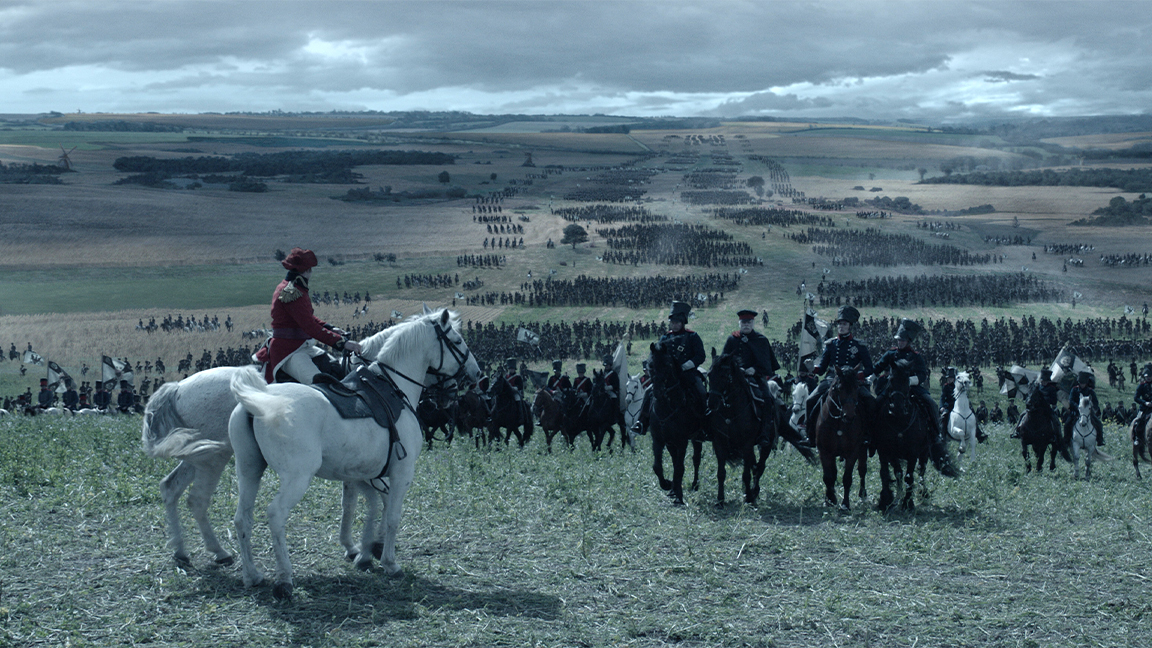
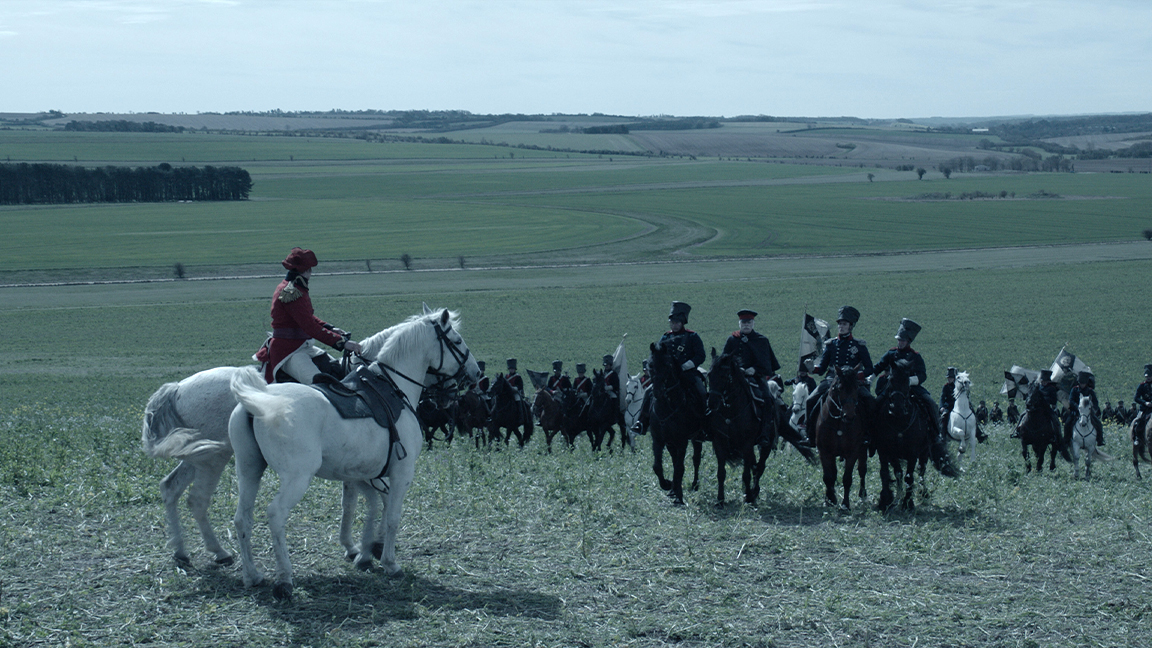
MPC was the lead VFX studio on Napoleon, overseen by Henley, but in total there were five VFX companies and 369 artists that helped bring Ridley Scott's vision to life. In no way is Napoleon a 'no CG' film, but it is one that embraces the full artistry of modern filmmaking, from a desire to film as much as possible on location, to practical and computer VFX, stunts, miniatures, ice and water simulations, exploding horses, full environment recreations and some incredible matt paintings.
But, "There's always something… fuck," shrugs Henley has I ask him about those loud critics of using CG, adding, "We're trying. We're all trying. It's hard". He tells me how it can be easier to just replace everything with CG but often the harder path is the most rewarding, revealing: "I grew up in the school of compositing where in every shot we'd try and get in bits of real stuff. If you just load in as much real as possible then it will take the curse off it, hopefully."
Napoleon is still in cinemas but also available on the best streaming services now, including AppleTV and Amazon Prime Video.







